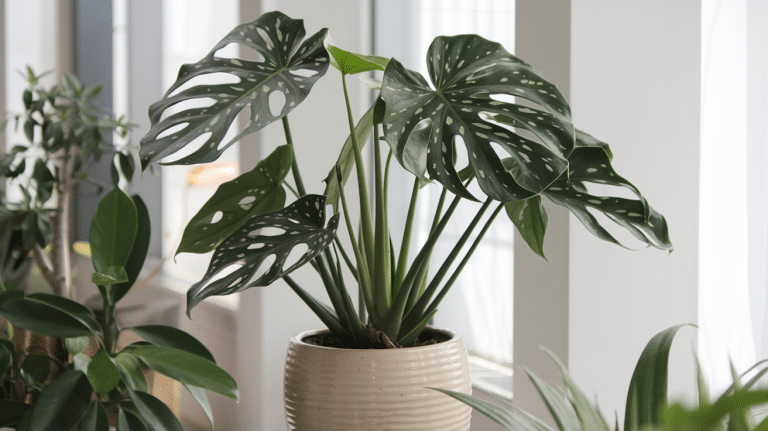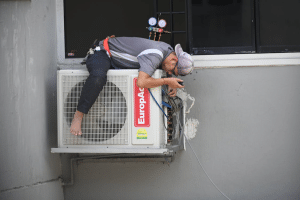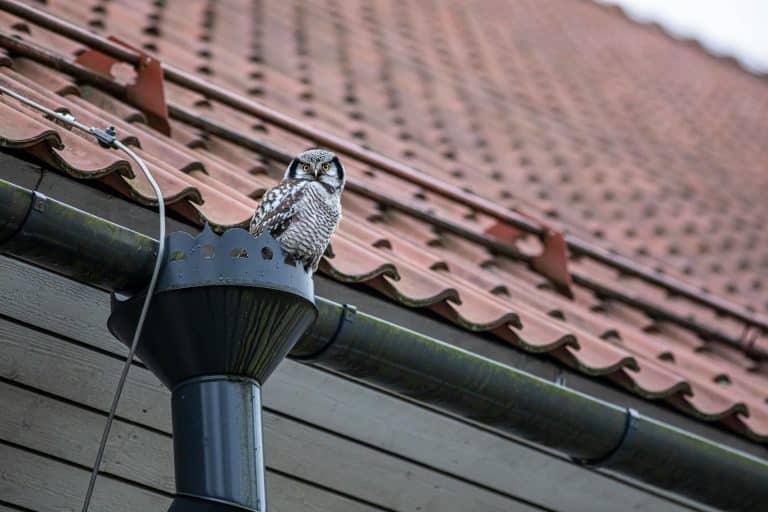Got a Monstera Thai Constellation but not sure how to keep it happy? You’re not alone. These stunning plants with their starry cream spots need special care, but it’s easier than you might think.
In this guide, you’ll learn exactly what your Thai Constellation needs to thrive. We cover everything from light and water needs to fixing common problems, growing new plants, and changing care with the seasons.
We even compare it to other Monstera types so you know what makes yours special.
Ready to help your plant grow healthy and strong? Let’s get started with simple, clear tips that really work.
Understanding Monstera Thai Constellation
This plant stands out among houseplants with its beautiful cream-white spots on green leaves that look like stars. Unlike other Monstera plants, these spots won’t fade as the plant grows.
Thai Constellation grows much slower than regular Monstera plants because it has less green in its leaves for photosynthesis.
These plants come from labs through tissue culture, which keeps their special spotting pattern consistent.
Ideal Growing Conditions
Thai Constellation needs the right setup to stay healthy:
- Light: Bright light but not direct sun. An east-facing window works well.
- Temperature: Keep between 65°F to 80°F (18°C to 27°C).
- Humidity: Aim for 60% or higher using a humidifier or pebble tray.
- Soil: Use a loose mix that drains well – combine potting soil with perlite, orchid bark, and peat moss.
- Watering: Wait until the top 1-2 inches of soil feels dry before watering. Don’t let it sit in water.
Monstera Thai Constellation Care Tips
Taking good care of your Thai Constellation requires attention to a few basic plant needs. Follow these tips to help your plant grow strong and healthy.
1. Light and Placement
Your Thai Constellation needs bright, indirect light to grow well. Too much direct sun can burn its leaves, while too little light makes its slow growth even slower.
- Place near an east-facing window for morning light
- Use sheer curtains to filter strong sunlight
- Avoid spots with hot, direct afternoon sun
- Rotate the plant every few weeks for even growth
2. Watering and Drainage
Thai Constellation plants need careful watering to stay healthy.
- Water when the top 1-2 inches of soil feels dry to touch
- Use room-temperature water
- Water thoroughly until it flows from drainage holes
- Empty the saucer after watering – never let roots sit in water
- Water less often in winter when growth slows down
3. Soil and Fertilization
The right soil helps your Thai Constellation grow strong roots and stay healthy.
- Mix regular potting soil with orchid bark, perlite, and peat moss
- This mix lets air reach roots while holding some moisture
- Feed with mild liquid plant food during spring and summer
- Apply at half the strength listed on the package
- Stop feeding in fall and winter when growth slows
4. Temperature and Humidity
Thai Constellation grows best in warm, humid conditions.
- Keep temperatures between 65°F and 80°F (18°C-27°C)
- Keep away from cold drafts, air conditioners, and heaters
- Aim for humidity above 60%
- Increase humidity with a humidifier, pebble tray, or by grouping plants
- Misting leaves can help but isn’t enough on its own
5. Pruning and Support
Some basic pruning and support will help your plant look its best.
- Remove yellow or brown leaves with clean scissors
- Wipe dust from leaves with a damp cloth to help them absorb light
- Add a moss pole or trellis for climbing as the plant grows
- Tie stems gently to the support with soft plant ties
- Clean your tools between cuts to stop the spread of any problems
Common Problems with Thai Constellation
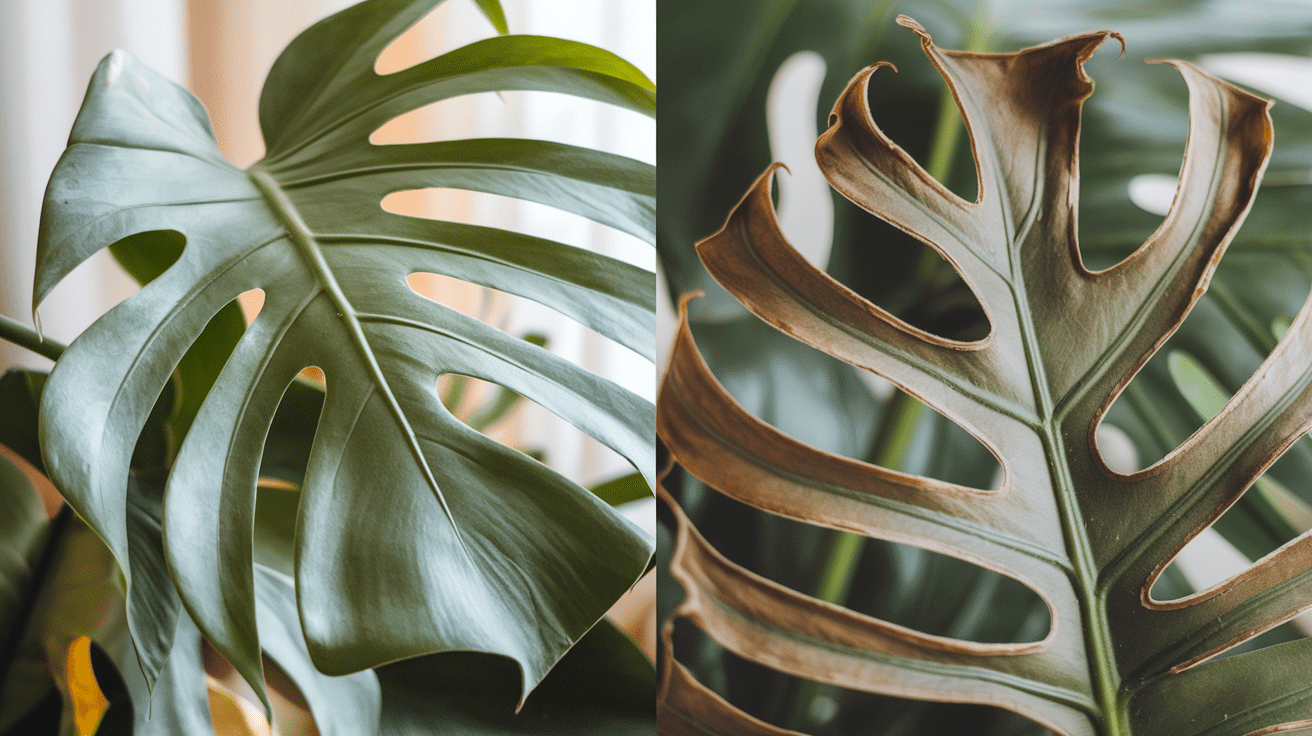
Even with good care, Thai Constellation plants sometimes show signs of stress. Here’s how to spot problems early and fix them fast.
Yellowing Leaves: Causes and Solutions
Yellowing leaves often signal watering issues. Overwatering is the most common cause – check if the soil feels wet for days after watering. Let the soil dry more between waterings and make sure your pot has good drainage holes.
Yellow leaves can also mean too little light – try moving your plant to a brighter spot without direct sun. Old leaves naturally turn yellow and drop off over time, so don’t worry if it’s just one older leaf.
Brown Spots and Scorched Leaves
Brown spots with crispy edges typically mean sunburn from too much direct light. Move your plant away from harsh sun, especially afternoon sun. Brown spots can also happen from very low humidity.
Increase moisture in the air with a humidifier or pebble tray. If leaves have dark, soft brown spots, this might be a fungal issue caused by water sitting on them—avoid getting water on leaves when watering.
Why is My Thai Constellation Not Growing?
Thai Constellation grows much slower than regular Monstera plants – this is normal. If your plant hasn’t grown in months, first check the season.
These plants mostly grow in spring and summer, with little to no growth in fall and winter.
If it’s the growing season, try more light (but not direct sun). Gently remove the plant from its pot to check if it is rootbound —if roots circle, it’s time for a slightly bigger pot.
Remember that new leaves might take weeks or months to form.
Propagating Your Monstera Thai Constellation
Growing new Thai Constellation plants from your existing ones takes patience but can be very rewarding. The process is simple but needs careful attention to detail.
Steps for Propagation
- Initial step: Choose a healthy stem with at least one leaf and node (the bumpy part where leaves grow from). Cut just below this node with clean, sharp scissors. Take cuttings in spring or early summer during active growth.
- Steps for water propagation: Place the cutting in a clear glass with the node submerged. Keep leaves above water level and change the water weekly to prevent rot. Watch for white roots to form from the node over several weeks.
- For soil propagation: Let the cut end dry for an hour and plant it in a moist soil mix similar to what adult plants need. Keep soil slightly damp but not wet. Cover with a clear plastic bag to hold humidity. Open the bag daily for fresh air.
- Final steps: Wait 4-8 weeks for good root development. For water cuttings, pot up once roots reach 2-3 inches. For soil cuttings, watch for new growth after about 8 weeks. Treat your new plant like an adult Thai Constellation, but be extra gentle.
Monstera Thai Constellation vs. Other Monsteras
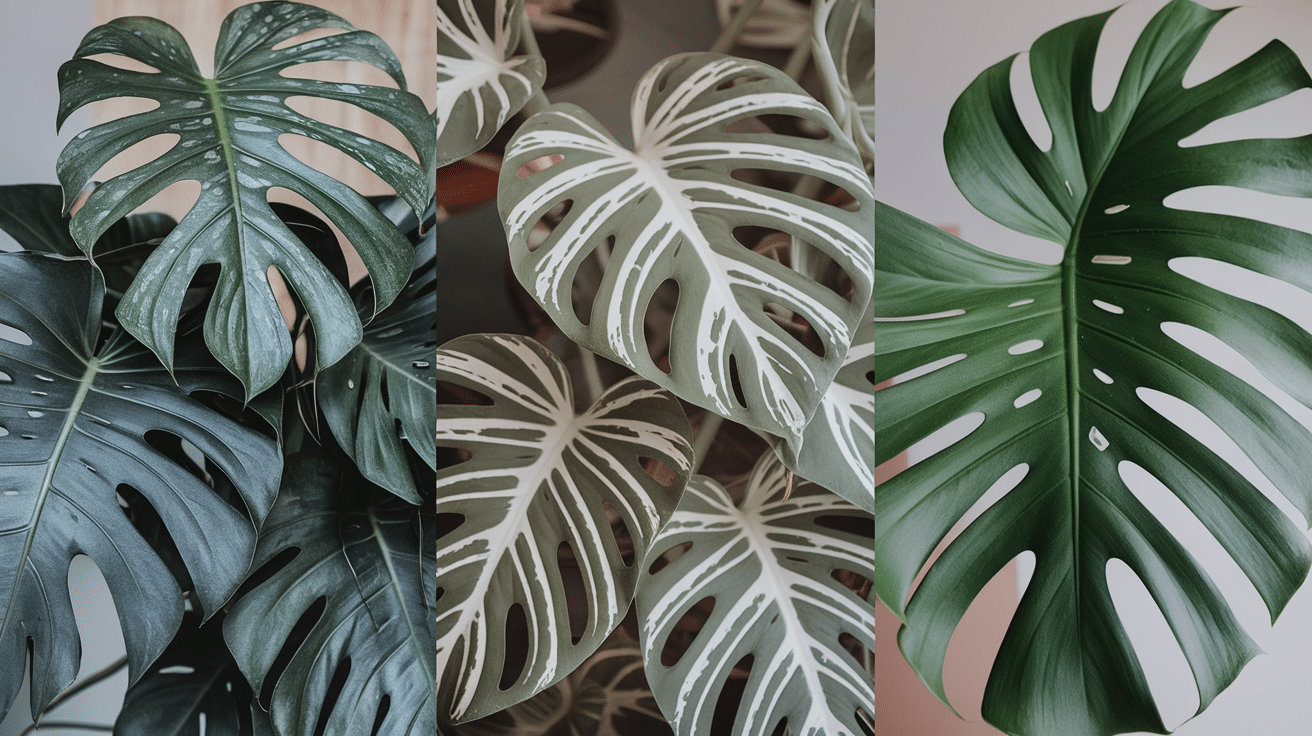
While all Monstera plants share some basic traits, the Thai Constellation has key differences that set it apart from its relatives.
These differences affect how you care for your plant and what you can expect as it grows.
| Feature | Thai Constellation | Monstera Albo | Regular Green Monstera |
|---|---|---|---|
| Origin | Lab-grown through tissue culture | Natural mutation | Natural plant |
| Variegation | Cream-white spots spread across leaves | Large white patches and sections | No variegation, all green |
| Variegation Stability | Very stable, won’t revert | Can revert to green if not enough light | N/A |
| Price | High but more stable pricing | Very high with more price variation | Affordable |
| Growth Rate | Very slow growing | Slow to moderate growth | Fast growing |
| New Leaves Per Year | 2-3 leaves typically | 3-5 leaves typically | 6-10 leaves typically |
| Propagation Success | Moderate success rate | Lower success rate | High success rate |
| Light Needs | Bright indirect light | Bright indirect to medium light | It can tolerate lower light |
| Care Difficulty | Needs more attention | Needs careful attention | Easy to care for |
| Leaf Size | Medium to large | Medium to large | Can grow very large |
| Rarity | Less rare, becoming more available | More rare, harder to find | Common |
Seasonal Care Tips for Monstera Thai Constellation
Your Thai Constellation needs different care as seasons change. Adjusting your care routine throughout the year helps keep your plant healthy as light and temperature shift.
Winter Care Adjustments
During winter, cut back on watering and only water when the top 2-3 inches of soil are dry. Stop all plant food until spring returns, and move the plant away from cold windows and drafty areas.
Watch out for dry air from heaters, as this can harm your plant.
Keep temperatures above 65°F (18°C) at all times and clean dust from leaves monthly to help them catch what little winter light exists. Don’t worry about slow or no growth – this is normal during the winter rest.
Spring & Summer: Boosting Growth
As spring arrives, start watering more as days get longer and warmer. Begin feeding with half-strength liquid plant food once a month and clean leaves to make the most of increased sunlight.
Check if your plant needs a bigger pot at the start of spring. Increase humidity as much as possible – these are tropical plants that love warm, moist air.
Watch for new growth points and help them find support if needed. Check more often for pests that become active in warm weather and rotate the plant every few weeks for even growth as sun angles change.
Conclusion
Taking good care of your Monstera Thai Constellation means paying attention to its basic needs.
With the right light, water, soil, and humidity, your plant can stay healthy for many years.
Remember that this plant grows slowly compared to other Monsteras, so be patient as it develops new leaves.
Each Thai Constellation is a bit different, with its own pattern of cream-white spots on green leaves.
What has worked well for your Thai Constellation? Have you found any special care tips that help it grow?
Share your story or ask questions about your plant – we’d love to hear from you!


